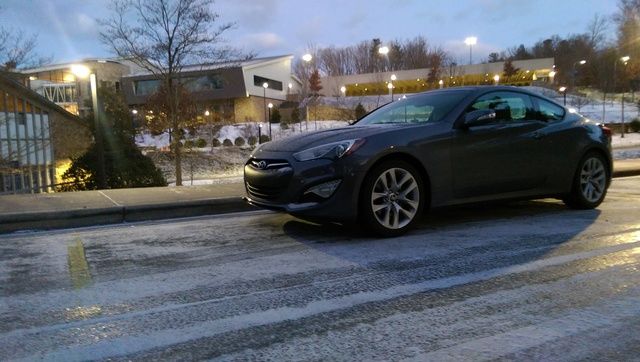Originally Posted By: IndyIan
True, mechanical AWD and 4WD , do help with braking as they equalize light braking forces from front to back. Both axles want to turn at the same speed as locking the front axle with AWD requires the engine do drop down to half the rpm. ABS is nice but to get maximum braking you've got to stand on the pedal sending the front axle into full ABS mode to get enough braking to get the back axle involved. With a mechanical link between the axles, both of them can be used at near full braking without ABS getting involved at all. My wife noticed right away switching back front true 4wd in winter to gizmo AWD, that the front tires use ABS all the time on braking... Now I don't think even subaru makes a true mechanical AWD (center differential)system anymore, so the electronic gizmos and clutches try to simulate one. I find in low traction situations though, the simulated AWD systems rely on some amount of slip to activate and then the amount of friction on sliding tire on ice or snow is much less than static friction. Then they brake the spinning tire(s) cutting momentum...
1. ABS activation doesn't necessarily correlate with stopping distances. Did you test those?
2. If you have different cars, then you have different tires, weight distribution, suspension geometry, etc. How did you control for those?
3. Are you talking about a fixed torque split, or fully locked axles? The latter would be... not good on the street.
4. You're describing a situation in which the wheel speed equalization effect of the powertrain overwhelms the additional mass in the powertrain and the way it would confound the operation of the ABS. Sounds like something that -- if it even works -- would be most relevant to an old car with highly primitive ABS, not one with modern ABS and electronic brakeforce distribution.
5. Even if this all played out the way you're suggesting and was directly attributable to the AWD/4WD, it wouldn't be particularly relevant because it'd only apply in an "all else equal" situation -- i.e. two of the exact same vehicle with the same tires and roughly equal curb weights, but with different AWD/4WD systems. Doesn't really exist in the real world. Vehicles with the type of system you're talking about tend to be heavier than vehicles without, and the added momentum increases stopping distances in all conditions.
True, mechanical AWD and 4WD , do help with braking as they equalize light braking forces from front to back. Both axles want to turn at the same speed as locking the front axle with AWD requires the engine do drop down to half the rpm. ABS is nice but to get maximum braking you've got to stand on the pedal sending the front axle into full ABS mode to get enough braking to get the back axle involved. With a mechanical link between the axles, both of them can be used at near full braking without ABS getting involved at all. My wife noticed right away switching back front true 4wd in winter to gizmo AWD, that the front tires use ABS all the time on braking... Now I don't think even subaru makes a true mechanical AWD (center differential)system anymore, so the electronic gizmos and clutches try to simulate one. I find in low traction situations though, the simulated AWD systems rely on some amount of slip to activate and then the amount of friction on sliding tire on ice or snow is much less than static friction. Then they brake the spinning tire(s) cutting momentum...
1. ABS activation doesn't necessarily correlate with stopping distances. Did you test those?
2. If you have different cars, then you have different tires, weight distribution, suspension geometry, etc. How did you control for those?
3. Are you talking about a fixed torque split, or fully locked axles? The latter would be... not good on the street.
4. You're describing a situation in which the wheel speed equalization effect of the powertrain overwhelms the additional mass in the powertrain and the way it would confound the operation of the ABS. Sounds like something that -- if it even works -- would be most relevant to an old car with highly primitive ABS, not one with modern ABS and electronic brakeforce distribution.
5. Even if this all played out the way you're suggesting and was directly attributable to the AWD/4WD, it wouldn't be particularly relevant because it'd only apply in an "all else equal" situation -- i.e. two of the exact same vehicle with the same tires and roughly equal curb weights, but with different AWD/4WD systems. Doesn't really exist in the real world. Vehicles with the type of system you're talking about tend to be heavier than vehicles without, and the added momentum increases stopping distances in all conditions.



